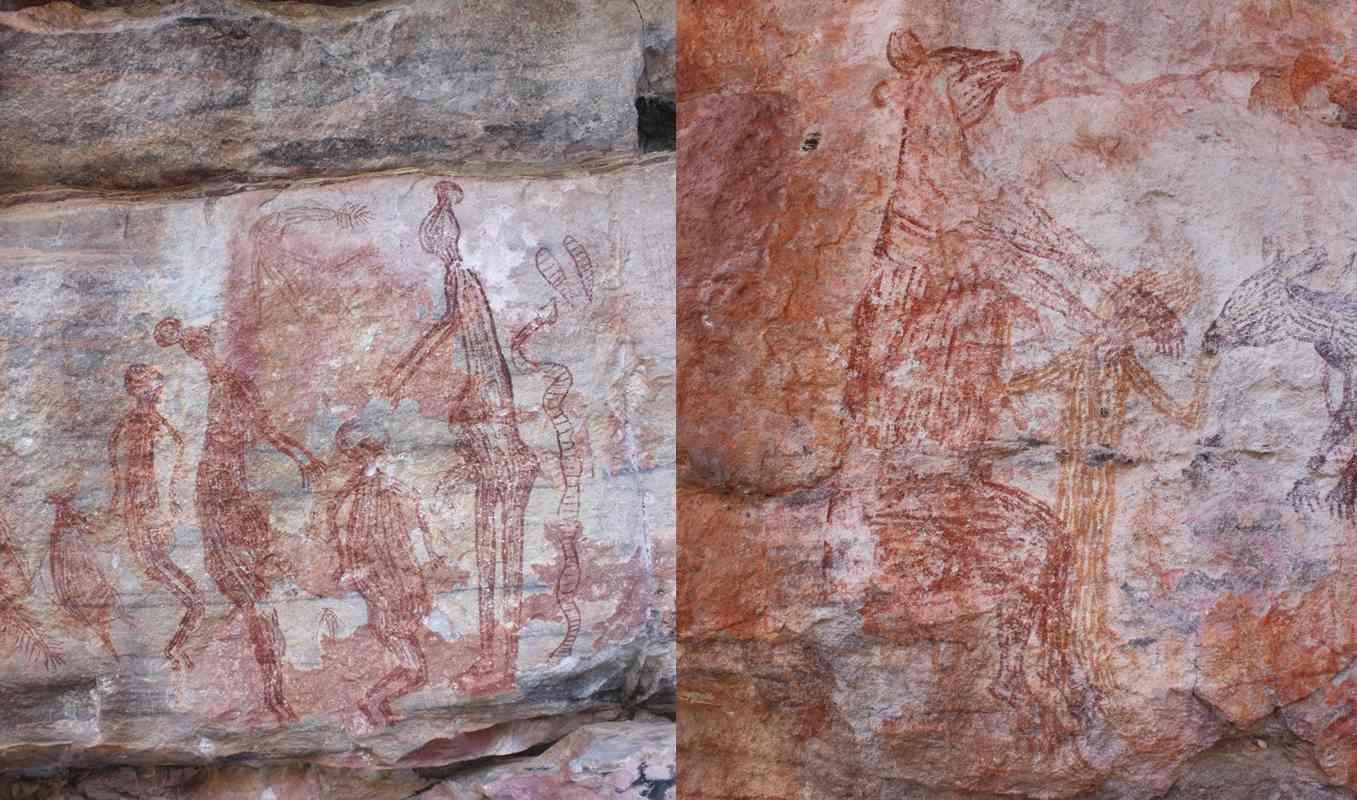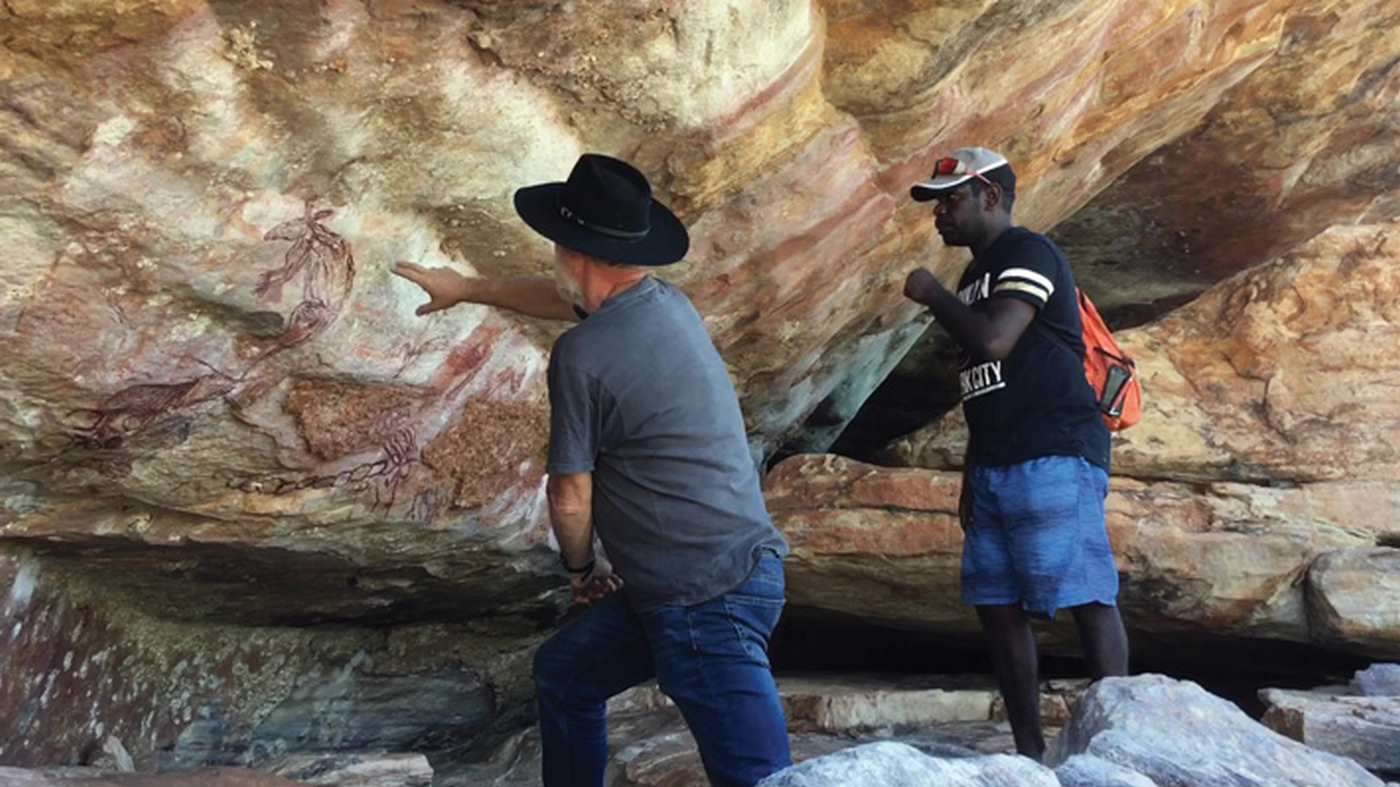Fungi Could Be the Answer to Global Warming as They Store a Third of All Carbon Emissions
Their vast network of roots known as mycelia has now been shown hold a third—yes, a third, of the annually emitted carbon on Earth.

Australia's vast wildernesses are famous for many things, but rock art, specifically one of the largest concentrations of rock art known in the world, isn't typically one of them.
West Arnhem Land in the Queensland Peninsula hosts an incredible painted record of Man's relation to his planet, its changes, challenges, and bounty, but a completely new rock art style covering 4,000 years of history shows Aboriginal Australians adapting to the transformation of Arnhem land into the lush riverine environment it is today.
The total collection of painted rock art in West Arnhem Land has been dated to a span of 30,000 years, stretching from just a few centuries ago to back within the last ice age. However, the period between 8,000 BCE and 4,000 BCE was seemingly absent from the variety of images painted onto the sandstone.
Now, the Bininj, Mawng, and Amurdak Aboriginal people teamed up with archaeologists led by Paul Tacon of Griffith University to finally isolate the works from this hidden period. They show a land in flux, where sea level rise meant the coasts retreated backward 150 feet per year, where mangrove forests came to dominate the near-shore landscape, and increased rainfall fed already swollen rivers.
Using the local Mawng People's language, one of Tacon's Bininj Aboriginal collaborators has dubbed the new rock art style the Maliwawa Style. After 8 years of field surveying and work, the team has documented 572 Maliwawa paintings and is ready to share their story with the world.
"It was really exciting to find previously undocumented shelters with lots of Maliwawa figures on walls and ceilings, sometimes in scenes," Tacon told Archaeology Magazine, where a reader can read their feature piece on the topic. "When we saw these paintings for the first time, there was a rush of adrenaline, much excitement, cheering, and lots of shouts to each other."
16,000 years ago, paintings were simply images of animals, while 5,000 years later the style shifts to one depicting humans interacting with animals and the landscape with tools. Then there's the 4 millenium gap recently filled by the Maliwawa Style, before Aborigines began using unique floral motifs around 4,000 years ago, and practicing anatomical drawings 2,000 years after that.
Maliwawa Style figures showcase people in dreamlike floating poses. Metamorphoses are common, with humans taking on the shapes of animals—like a kangaroo head. Furthermore, the interplay between human and animal is more intimate than any other style.
They also depict evidence of a changing climate, with the first-ever painting of a dugong found anywhere on Earth. Many snakes and reptiles are shown, perhaps because their burrows were being flooded routinely.

Unlike the other rock art styles in Arnhem Land that portray the world through human eyes, Tacon and his Aboriginal collaborators find that animals are often the storytellers in Maliwawa art. Their hypothesis is that it was the ancients' way of showing the degree to which every form of life was impacted by the dampening of their land.
There's also significant variation in the Maliwawa works.
"Populations were becoming more regionally distinct, and this can be seen in the rock art across West Arnhem Land," Tacon told Matt Stirn, writing in Archaeology Magazine. "The emergence of a few regionally distinct styles of rock art in northern Australia, including the Maliwawa Style, reflects this."
While working alongside the Aborigines, Tacon was able to benefit from a "two-toolbox" approach, that showed how the more dramatic Maliwawa depictions are showing the "Dreaming"—the Bininj creation story when the world was made and spirits passed on information through art.
"Some Maliwawa Style scenes seem to depict important Dreaming creation stories that are still important today," says Tacon, "and aspects of the style, such as the back-to-back figures, are still painted in the context of important spirit beings. So the Maliwawa Style figures highlight long-term connections not only to the land, but also to the origin of key creation stories in a time of great change."
The 21st century has seen some of the largest advances in the study of rock art in modern history. Large works, such as the so-called "Sistine Chapel of the Ancients" or the Pecos River Style, which is now being recognized as the "oldest book in North America," show a level of community organization and depth of knowledge and theology long thought absence in hunter-gatherer society.
SHARE These Stunning Images With Your Friends…
Be the first to comment